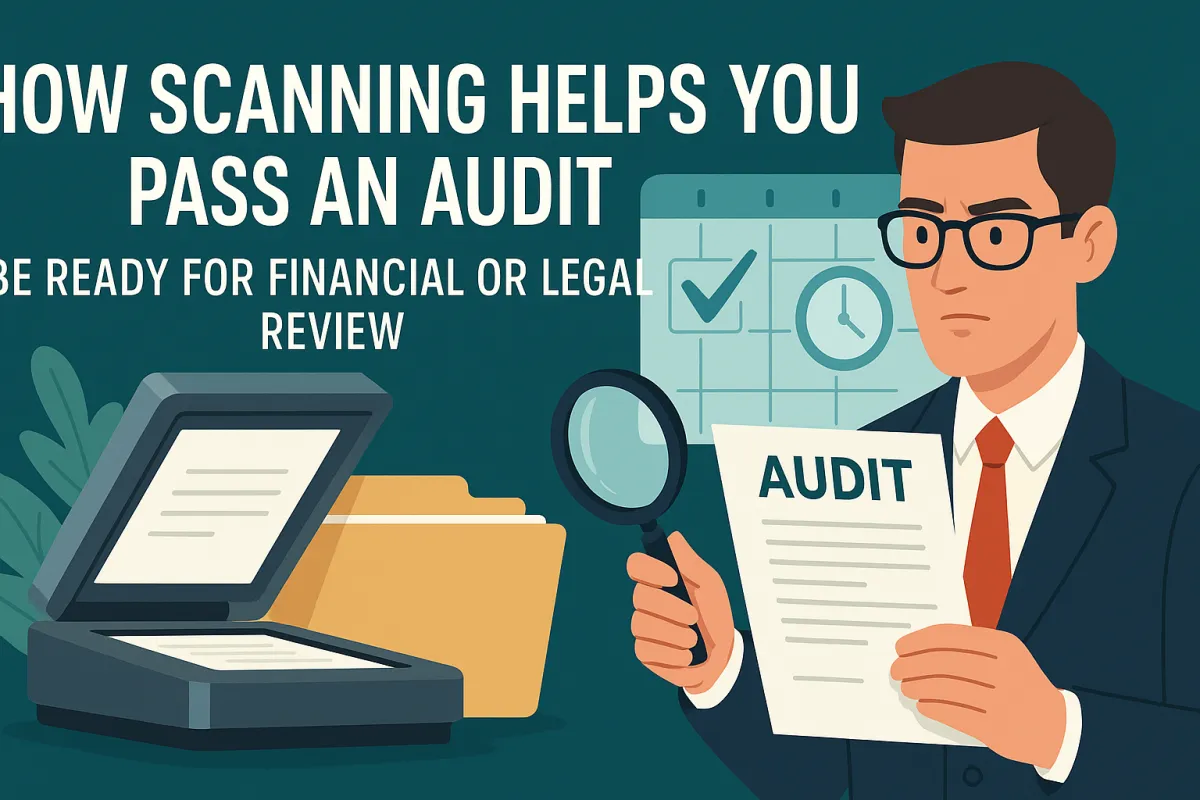
How Scanning Helps You Pass an Audit: Be Ready for Financial or Legal Review
By: USA IMAGING, Inc.
When an audit notice lands on your desk—whether it's financial, legal, or regulatory—the last thing you want is a paperwork scramble. Yet for many businesses, that’s exactly what happens: files are misplaced, incomplete, or inaccessible when they’re needed most.
Fortunately, there’s a proactive way to stay ahead of the chaos: document scanning and digital archiving.
Let’s explore how scanning supports audit readiness—and why it’s one of the smartest investments for financial institutions, law firms, healthcare organizations, and government contractors alike.
1. Instant Access to Critical Records
Auditors are known for requesting specific documentation on short notice—think invoices, contracts, correspondence, approvals, or compliance certifications.
With digital files, you can:
Retrieve documents in seconds, not hours
Search by keywords, dates, or client names
Respond to auditor requests without sifting through boxes or storage rooms
No more digging. No more delays. Just instant access when it counts.
2. Centralized and Organized Records
Paper documents are often scattered across departments, file cabinets, and off-site storage. Scanning consolidates everything into a centralized digital repository, where files are:
Indexed and categorized
Tagged with metadata
Accessible to authorized staff via secure cloud or server platforms
The result? Clean audit trails and faster file pulls, even across multiple years or departments.
3. Enhanced Compliance with Retention Policies
Every industry has document retention rules—some files must be kept for 3, 7, or even 10+ years. Scanned documents can be tagged with retention dates, automatically archived, or flagged for deletion after their expiration.
This reduces your risk of:
Holding expired documents (a compliance risk)
Accidentally destroying active records (a legal liability)
Digital retention systems ensure you keep what you need—and only what you need.
4. Secure, Auditable Access Logs
Paper doesn’t leave a trail. But digital files do.
Scanning enables secure document portals where every access, edit, or download is logged—giving you:
Proof of who accessed what and when
Detailed audit trails for sensitive or restricted files
Role-based access control to ensure compliance with data privacy laws
This level of control is essential for financial audits, legal reviews, and regulatory inspections.
5. Eliminate Common Audit Red Flags
Auditors are quick to flag:
Missing documentation
Incomplete transaction files
Illegible records
Poor record organization
Scanning eliminates these red flags by creating clear, complete, and high-resolution digital records, all indexed for easy validation.
Conclusion: Scanning Isn’t Just About Efficiency—It’s About Protection
If an audit is a test, then scanning is your study guide. It helps you stay organized, responsive, and compliant—all while reducing stress and avoiding costly delays or penalties.
Is Your Organization Audit-Ready?
At USA Imaging, Inc., we help law firms, finance teams, and compliance departments digitize their records with indexing, secure access, and audit-friendly organization.
Contact us today to future-proof your documents—and your next audit.
